The sports world is confronting a silent epidemic — athlete burnout. When tennis star Ash Barty retired at 25, gymnast Simone Biles stepped back during the Tokyo Olympics, and cricketer Ben Stokes took a mental-health break. The message was clear: depression continues to pose a major global health challenge. Across disciplines, stories of exhaustion and withdrawal reveal that performance alone cannot sustain excellence without psychological balance.
With over 32 years in media and research, and insights drawn from ACC-level coaching and NLP training. Trendvisionz presents this in-depth exploration of how athletes rebuild motivation through self-regulation and recovery management. Our experience offers a holistic perspective on what drives recovery and renewal after prolonged stress.
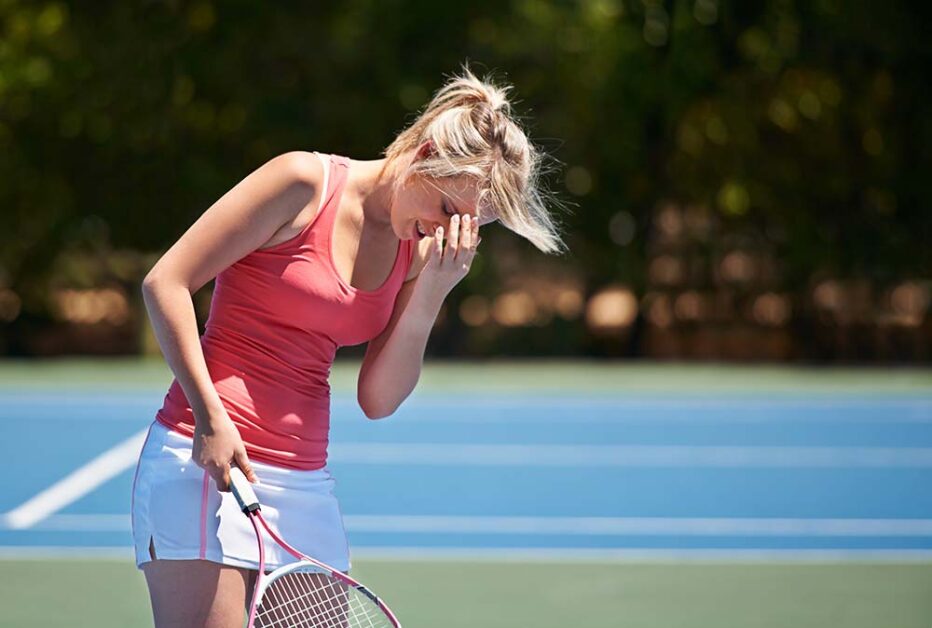
Grounded in sports psychology and informed by global case studies. This article examines how psychological resilience training empowers youth and elite athletes to transform stress into strength. It outlines proven techniques—mindfulness, visualization, goal resetting, and adaptive coping.
Each one helps convert burnout into breakthrough. Together, they build the foundation for sustainable peak performance.
Also Read:
- Sports Mentors in Indian Sports: The People Powering Revolution
- Beyond Cricket: Emerging Sports Gaining Popularity in India
Understanding Athlete Burnout
What happens when an athlete’s passion turns into pressure? Burnout is a state of emotional, physical, and mental exhaustion caused by long periods of competitive stress. It gradually erodes motivation and joy, leaving athletes disconnected from their purpose (Madigan et al., 2022). This pattern follows the Cognitive-Affective Model of athlete burnout, where stress perceptions and coping imbalance drive emotional exhaustion.
Early signs often appear quietly before performance declines. Fatigue sets in despite rest, focus drops, and enthusiasm fades. For young athletes, this shift often goes unnoticed until results and confidence begin to slip.
Common Signs and Causes
Recognizing where burnout begins helps prevent decline. It often starts with subtle shifts in attitude and recovery patterns that reveal both the internal and external pressures athletes face.
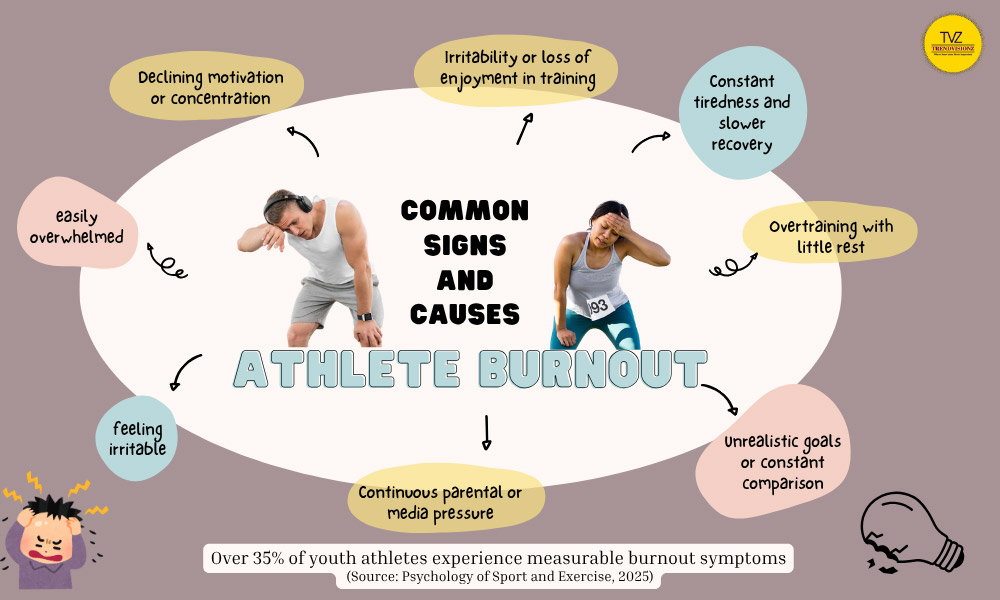
- Irritability or loss of enjoyment in training
- Constant tiredness and slower recovery
- Declining motivation or concentration
- Overtraining with little rest between sessions
- Unrealistic goals or constant comparison
- Continuous parental or media pressure
More than 35% of youth athletes1 show measurable burnout symptoms, highlighting how emotional and physical fatigue often emerge early in a career. These statistics show how widespread and under-recognized this issue has become.
The Impact of Athlete Burnout
When burnout deepens, both body and mind start to signal distress. Sleep becomes irregular, performance dips further, and self-belief weakens. Many athletes begin to withdraw from teammates or feel detached from their identity outside sport.
More than one billion people are living with mental health disorders, including anxiety and depression, highlighting the global scale of this growing crisis – WHO

Broader effects include:
When burnout intensifies, its impact extends beyond training and competition. The body struggles to recover, emotions flatten, and motivation fades, creating a cycle that affects both physical health and mental stability.
- Insomnia or chronic fatigue
- Increased injury risk
- Feelings of isolation and emotional numbness
- Anxiety or depressive symptoms
Takeaway: Athlete burnout is not failure. It is a clear signal from the body and mind to pause, recover, and rebuild balance before returning stronger.
Why Mental Resilience Matters
What keeps athletes performing when physical training reaches its limit? Physical strength builds power, but mental resilience sustains consistency under pressure. It determines whether an athlete endures the challenge or collapses under stress.
Longitudinal studies2 suggest that burnout evolves through emotional fatigue, loss of motivation, and diminished identity among youth athletes, emphasizing the need for early resilience training.
Mental resilience acts as a protective barrier that helps athletes cope with the emotional weight of competition. It supports adaptability, focus, and self-belief, especially during moments of uncertainty or defeat. Building this mindset allows athletes to recover faster, stay grounded, and maintain motivation through both victories and losses.
The 4 Cs of Mental Resilience
Every resilient athlete develops four essential traits that shape long-term performance. These qualities help balance effort and energy across high-pressure environments.
- Confidence: Trusting personal ability and preparation.
- Control: Managing emotions and responses during tough situations.
- Commitment: Staying consistent even when results take time.
- Concentration: Maintaining focus despite distractions or setbacks.
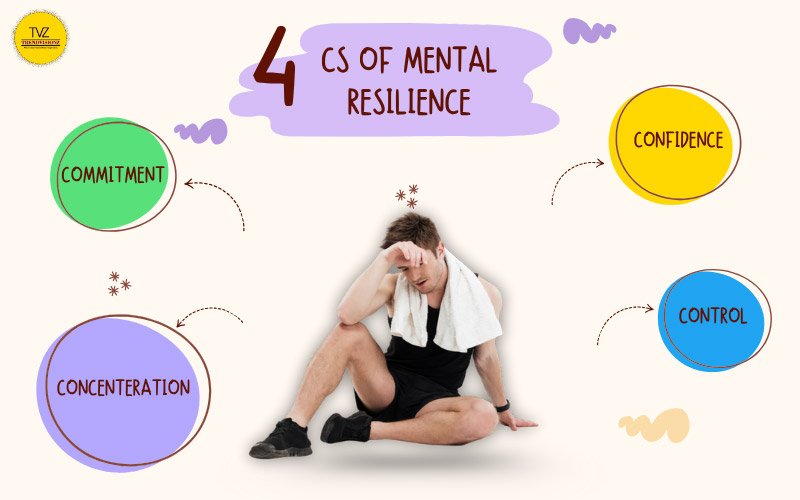
These traits create emotional stability and prevent burnout spirals that often occur when stress goes unchecked.
Lessons from Virat Kohli
When pressure builds and expectations feel unending, even the most disciplined athletes need pause. Virat Kohli’s openness about mental exhaustion in 2022 reminded the sporting world that rest can be more powerful than relentless practice.
For the first time in 10 years, I didn’t touch my bat for a month. I came to the realisation that I was trying to fake my intensity a bit recently. I was convincing myself that, no, you had the intensity. But your body was telling you to stop. The mind was telling me to take a break and step back. — Virat Kohli, Times of India, August 27, 2022
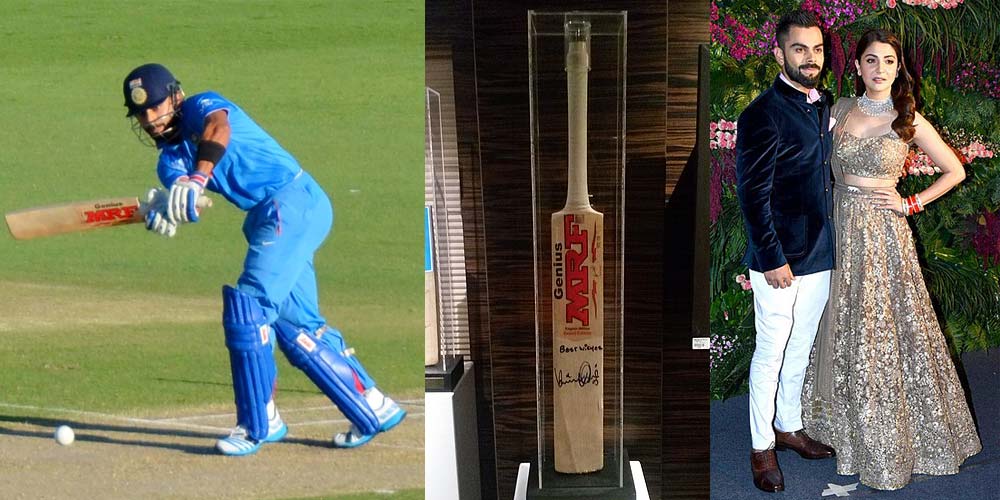
Key takeaways from his approach:
- He acknowledged burnout instead of hiding it.
- Took a conscious break to restore energy and focus.
- Used mindfulness and self-reflection to regain perspective.
- Returned to the game with renewed motivation and emotional balance.
Kohli’s journey3 proves that stepping back is not giving up. It is choosing clarity, balance, and lasting performance. Resilience converts stress into strategy. It is the defining difference between temporary success and lasting peak performance.
The Science of Resilience
Have we ever wondered, what happens inside the mind when athletes face constant stress? Resilience is not just psychological; it functions as an internal energy-management system driven by brain chemistry, primarily regulated by cortisol and dopamine.
When stress levels stay high for too long, cortisol increases and the brain shifts into survival mode. Focus and motivation start to drop, leading to slower reaction times and emotional fatigue. Over time, this imbalance can weaken confidence and amplify the effects of burnout.
How the Brain Builds Resilience
Resilience strengthens when athletes engage in habits that restore balance and promote healthy neurochemical activity.
- Chronic stress reduces focus, energy, and decision-making accuracy.
- Mindfulness and visualization help lower cortisol and enhance concentration.
- Neuroplasticity allows the brain to retrain and adapt after setbacks.
- Controlled experiments show that visualization and meditation4 practices reduce anxiety, improve concentration, and enhance recovery by over 20%
These findings show that the mind learns to recover just like the body does through repetition, awareness, and rest. Training the brain with simple daily practices can improve composure, speed up recovery, and sustain motivation under pressure. For deeper insight into mindfulness practices that restore focus and balance, read The Bell of Mindfulness: The Ultimate Path to Stress-Free Living
Takeaway: Resilience is a trainable neural skill. It strengthens through consistent practice, reflection, and restorative rest.
Energy Management – The Core of Resilience
How can athletes sustain performance without feeling constantly drained? Every breakthrough begins with smarter energy distribution. It’s about balancing physical effort with emotional renewal so that focus, motivation, and recovery work together instead of against each other.

Energy management helps athletes understand when to push forward and when to pause. Those who master this balance build endurance that lasts beyond competition. The goal is not to do more, but to use energy with greater intention and awareness.
Acceptance-based approaches5 help athletes recognize thoughts without resistance and manage energy with greater emotional flexibility
Practical Ways to Manage Energy
- Identify energy drains such as overthinking, negative self-talk, and perfectionism.
- Refill energy through quality sleep, balanced nutrition, laughter, and gratitude.
- Prioritize activities that connect with purpose rather than pressure.
“Resilience is really energy in alignment with purpose.”
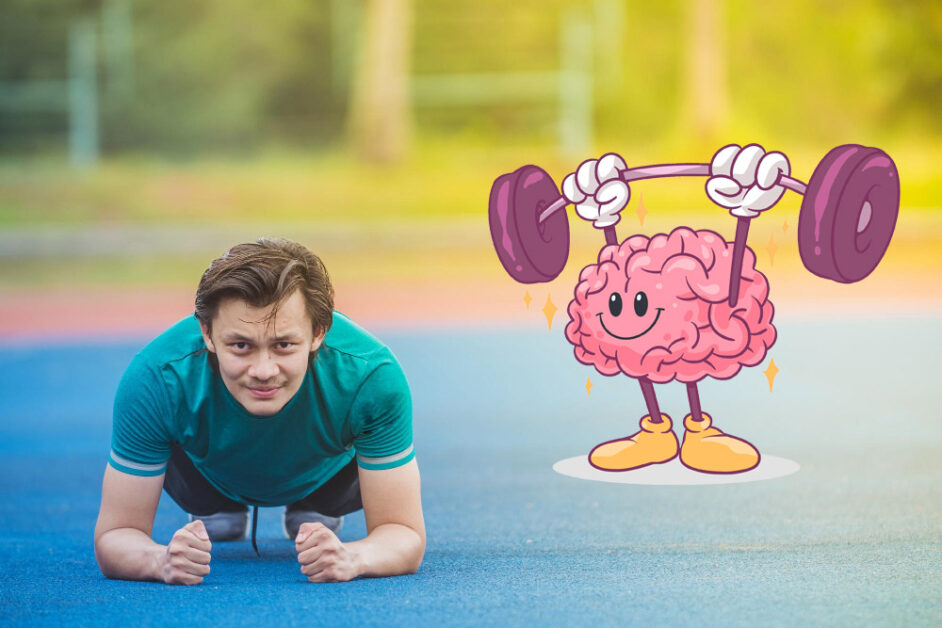
These simple shifts help athletes perform with consistency and avoid emotional fatigue. By aligning mindset and energy cycles, athletes can rebuild confidence and sustain long-term progress.
Takeaway: Managing energy, not time, is the true currency of resilience. When athletes channel their effort into what fuels them, they build lasting strength, clarity, and balance both on and off the field.
From Burnout to Breakthrough – Proven Strategies
How can athletes move from exhaustion to renewed performance? Recovery is not about doing less; it’s about doing what truly recharges the mind and body.
Over the years of coaching and working with high-performing professionals, I’ve seen that true resilience comes from balance, not intensity. These science-backed strategies combine practical experience and research to help athletes without losing joy for the game.
A. Mental Skills Training
Mental skills shape the foundation of emotional strength. They equip athletes to manage pressure, regulate emotions, and stay focused when challenges arise.
- Mindfulness and Gratitude: Reduce the stress response and promote calm awareness.
- Visualization and Imagery: Strengthen confidence by mentally rehearsing success.
- Goal Resetting: Focus on steady progress rather than perfection.
- Journaling: Process emotions constructively and learn from setbacks.
In my own coaching sessions, I’ve seen how these mental skills transform performance from within. Structured self-regulation programs6 using mindfulness and goal resetting have significantly reduced athlete stress and improved well-being in university-level studies.
Athletes who practice them regularly handle stress with greater control, bounce back faster after setbacks, and rediscover genuine joy in their game.
B. Coaching and Organizational Support
Supportive environments play a vital role in athlete resilience. When coaches encourage open communication, athletes feel safe to share struggles without fear of judgment.
- Supportive coaching fosters psychological safety and trust.
- Structured rest periods prevent overload and burnout.
- Programs like Khelo India Academies now integrate sports psychologists to build mental fitness at the grassroots level.
Over the years what I can say with experience, teams that prioritize empathy and structured recovery outperform those focused only on results. Supportive systems don’t just build champions; they build balanced, confident human beings.
C. Adaptive Coping and Recovery
Adaptability is key to resilience. Simple shifts in routine can help athletes regain mental clarity and focus.
- Active coping replaces overthinking and rumination.
- Breathing exercises and humor ease tension and rebuild focus.
Explore how mindful awareness supports recovery in high-pressure teams in Toxic Work Culture: A Mindfulness Guide to Self-Care. Small, consistent habits create big emotional shifts. These daily practices act as a bridge between fatigue and focus, turning burnout into breakthrough for athletes at every level.
For more insights on mindfulness, mindset, and performance psychology, explore the TrendVisionz Knowledge Hub — featuring exclusive expert articles and Spotify podcast episodes.
Real-Life Turnarounds – Stories of Resilience
True champions pause to heal before they rise again. Over the years, I’ve seen that the most powerful turnarounds often begin in moments of stillness, not celebration.
Ash Barty
Ash Barty shared her personal decision on her Instagram. Her shock decision to step away reminded the sports world that fulfillment matters as much as trophies. Her story continues to encourage young athletes to listen to their inner voice, embrace rest without guilt, and find long-term happiness beyond the scoreboard.
Retiring at 25 helped me rediscover joy beyond tennis. Prioritizing happiness over competition renewed my purpose- Ash Barty

Simone Biles
At the Tokyo Olympics, she withdrew from multiple events to protect her mental health. Her openness reshaped how the world views strength in sport, proving that courage also means knowing when to stop.
“Withdrawing from Olympic events to protect my mental health reshaped how the world sees strength in sport.”
Kelly Slater
The surfing legend took a three-year break early in his career to rediscover purpose. He returned with sharper focus, showing that time away can reignite both creativity and consistency.
Ben Stokes
The cricketer stepped back to recover from mental exhaustion. His honesty about the pressures of professional sport encouraged others to speak up rather than suffer in silence.
“Stepping back to recover from mental exhaustion encouraged me to speak up rather than suffer in silence.” — Ben Stokes
She withdrew from major tournaments to address emotional fatigue and start meaningful conversations about athlete well-being in modern sport.
Daria Kasatkina and Matthew Wolff
Both spoke openly about burnout and the value of prioritizing mental clarity over results. Their stories reflect a cultural shift toward acceptance and empathy in sports.
Each pause these sports personalities took became a pivot. A conscious rebuild of energy, focus, and identity. Comebacks are crafted in silence. Rest is reinvestment, not retreat.
The Future of Athlete Wellness
Sport is entering a new era where mental health and technology work together to create complete athlete care. The focus is shifting from physical output to overall balance and emotional sustainability.
Emerging Trends
- AI-driven wearables now track stress levels, sleep quality, and recovery cycles with precision.
- Mindfulness and meditation apps personalize recovery routines for athletes based on individual mental patterns.
- Sports psychology is being integrated into grassroots programs, helping young athletes understand emotional regulation early in their careers.
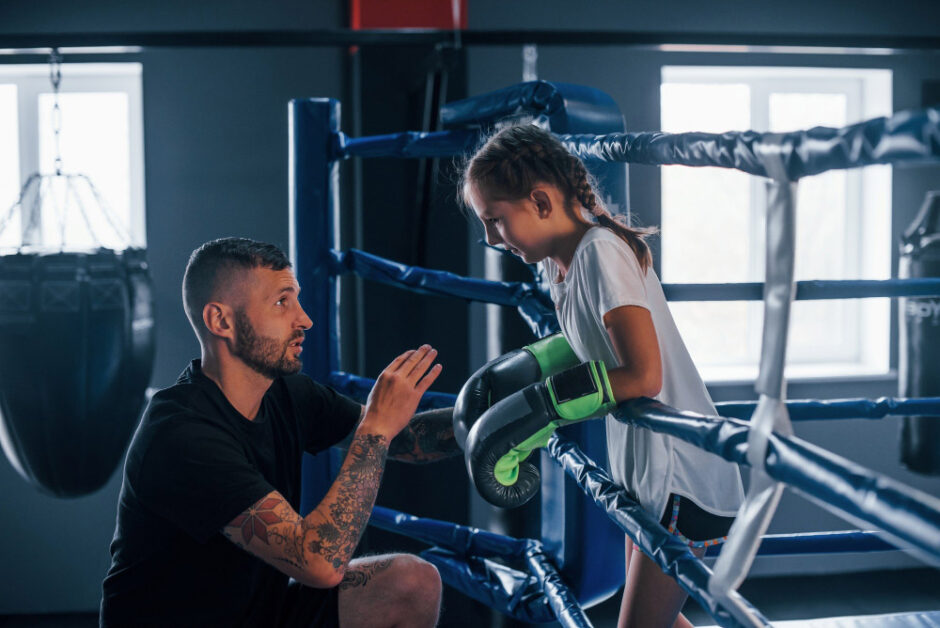
The New Vision of Performance
The next generation of champions will be measured not by endurance alone but by the harmony they maintain between effort and rest. They will know when to accelerate and when to restore.
Modern performance psychology emphasizes balance over burnout, where recovery and awareness define true athletic excellence.
| Focus Area | Core Practice | Impact |
| Mental Resilience | 4 Cs Model | Sustained motivation |
| Energy Management | Mindfulness, sleep, nutrition | Reduced burnout risk |
| Coaching Support | Psychological safety | Team wellbeing |
This integrated approach turns training into transformation, ensuring athletes perform sustainably—both on the field and within themselves.
Takeaway: Peak performance belongs to athletes who master their energy, emotions, and mindset with equal intent and awareness.
Also Read:
- 10 Gorgeous Female Athletes Who Slayed the Red Carpet Like Supermodels
- A New Dawn: Sports For Women Empowerment Leading The Way
FAQs: Athlete Burnout
What is an example of a burnout athlete?
Tennis player Ash Barty is a well-known example of athlete burnout. She retired at 25 to regain balance and happiness, showing that stepping away can lead to renewed purpose and mental strength.
What sport has the highest burnout rate?
Research indicates that individual sports like gymnastics, swimming, and tennis have the highest burnout rates. These disciplines demand intense training, early specialization, and constant self-comparison, which often lead to emotional and physical exhaustion over time.
What are “the twisties” in gymnastics?
“The twisties” occur when a gymnast loses spatial awareness mid-air, making it unsafe to land skills. Simone Biles experienced this at the 2020 Tokyo Olympics, prompting her to withdraw and prioritize mental health over performance safety.
Conclusion
Athlete burnout is not the end of performance. It is growth in disguise. With mental resilience, mindfulness, and energy management, athletes can transform exhaustion into clarity and focus. Support from coaches, sports psychologists, and organizations makes this transformation possible. At TrendVisionz, we continue to explore how science, mindset, and digital wellness combine to build stronger, more balanced performers.
Visit TrendVisionz to explore more insights on athlete wellness, resilience, and performance strategies for the modern sports era.
Champions aren’t born in stadiums. They are rebuilt in silence, one mindset shift at a time.
Additional Resource:
- Saarinen, M., Phipps, D. J., Kuokkanen, J., Bjørndal, C. T., Bentzen, M., Ommundsen, Y., & Gustafsson, H. (2025). Burnout trajectories among adolescent student-athletes: The role of gender, success expectations, and parental affection. Psychology of Sport and Exercise, 79, 102831. ↩︎
- Dišlere, B. E., Mārtinsone, K., & Koļesņikova, J. (2025). A scoping review of longitudinal studies of athlete burnout. Frontiers in Psychology, 16. ↩︎
- Kohli, V. (2022, August 27). Asia Cup 2022: Was not able to get that high intensity naturally, pushed myself to do it, says Virat Kohli. The Times of India. ↩︎
- Aksu, Ç., & Ayar, D. (2023). The effects of visualization meditation on the depression, anxiety, stress and achievement motivation levels of nursing students. Nurse Education Today, 120, 105618. ↩︎
- Birrer, Daniel & Diment, Gregory & Schmid, Olivier. (2019). Helping Athletes Defuse and Accept. 10.4324/9780429435232-6. ↩︎
- Dubuc-Charbonneau, Nicole & Durand-Bush, Natalie. (2015). Moving to Action: The Effects of a Self-Regulation Intervention on the Stress, Burnout, Well-Being, and Self-Regulation Capacity Levels of University Student-Athletes. Journal of Clinical Sport Psychology. 9. 173-192. 10.1123/jcsp.2014-0036. ↩︎
Stay Connected with Me
Anshuman Mahajan is a Digital Marketing Strategist, SEO Specialist, and Co-Founder of TrendVisionz. With expertise in ROI-focused growth strategies, brand development, and media solutions, he helps businesses navigate the fast-changing digital landscape with clarity and confidence.
- Explore my work: TrendVisionz | Nuteq Entertainment
- Read our newsletters: BizTech Chronicle
- Guest writer: BizCatalyst360 | Industry Blogs
- Courses & Certification: B.Com (Hons), University of Delhi | Digital Marketing (Shaheed Sukhdev College of Business Studies) | SEO Internship, ClickSlice (London)
- Join the community: LinkedIn Group – Digital Marketing & Content Creation World
- Connect with me: LinkedIn | BizTech Chronicle | #GrowWithAnshuman
- Share your review: Leave your feedback on Google — it helps us grow.
- Subscribe: Be part of our 1.95 Lakh+ YouTube family
Believe. Transform. Succeed. Let’s grow together.




2 comments
[…] Posts Burnout to Breakthrough: Athlete Burnout and Mental Resilience QS Rankings Explained: How Top Universities Are Ranked Worldwide Tirumala’s Lord […]
I just like the helpful information you provide in your articles
Comments are closed.